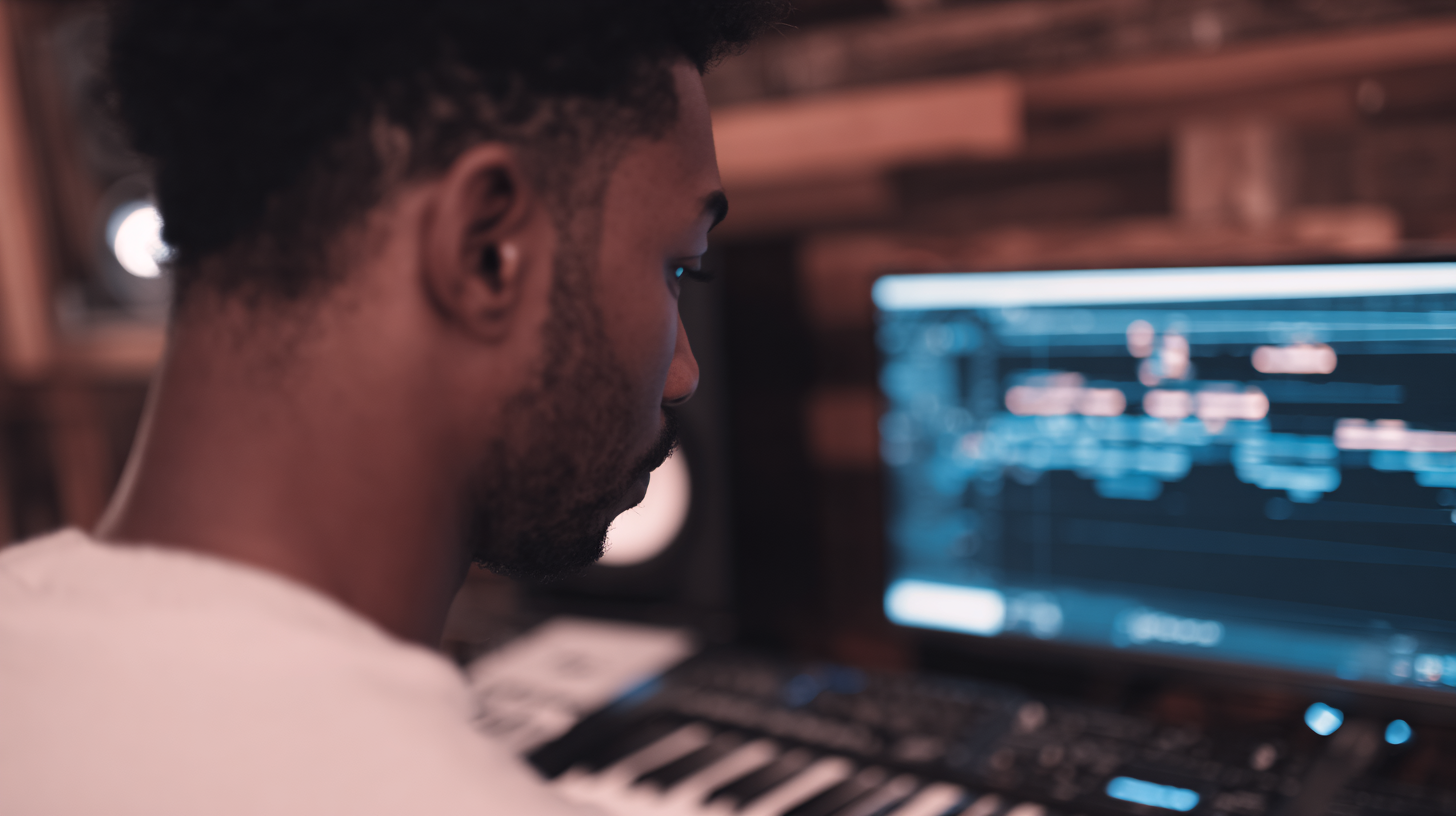
What Is Fundamental Frequency? A Metal Producer’s Guide
Nail The Mix Staff
Ever get that sinking feeling when your mix just sounds… muddy? You’ve got a thunderous kick from your GetGoodDrums library, a nasty bass tone dialed in with a Darkglass plugin, and a chugging 8-string guitar, but together, they sound like a woolly, undefined mess. The problem, more often than not, comes down to one core concept: fundamental frequency.
Understanding this isn’t just some boring audio-school theory. It’s the key to unlocking the punch, clarity, and power that separates a bedroom demo from a pro-level metal mix. In today’s scene, where the production standards set by bands like Periphery and Spiritbox are insanely high, you can’t afford to ignore it.
So, what is the fundamental frequency?
Simply put, it’s the lowest, and usually loudest, frequency that any instrument produces. It’s the frequency that defines the note’s pitch. Think of it as the sound’s core identity. Everything else you hear—the overtones and harmonics that give a sound its unique character or timbre—is built on top of this foundation.
For metal producers dealing with drop-tuned guitars, 5-string basses, and saturated low-end, mastering the fundamentals is not optional. It’s everything.
Finding the Fundamental Frequency in Your Mix
Before you can control these frequencies, you have to find them. Your best friend here is a spectrum analyzer. You don’t need fancy, expensive gear; a great one is probably already built into your DAW’s stock EQ, and world-class options like the FabFilter Pro-Q 3 make it incredibly easy to visualize your entire mix.
A Practical Walkthrough
This is dead simple. Let’s do it right now.
- Grab an EQ/Analyzer: Slap an EQ plugin with a built-in spectrum analyzer, like Pro-Q 3 or even Logic’s stock Channel EQ, onto the track you want to analyze (e.g., your kick drum).
- Isolate and Loop: Solo the track and loop a single, clean hit. For a kick drum, find one solid hit. For a guitar, loop a palm-muted open-string chug.
- Find the Peak: Look at the analyzer. You’ll see a bunch of peaks and valleys across the frequency spectrum. The first, highest peak way down in the low-end is your fundamental frequency.
For example, a kick drum might have its fundamental around 50-60Hz. The low B on a 5-string bass is about 31Hz, but its most powerful fundamental in a mix might be an octave up. That low F# chug on an 8-string guitar? The fundamental is down around 46Hz.
Knowing these numbers is your new superpower. Now let’s use it.
Using the Fundamental Frequency to Carve Out Space
The number one reason modern metal mixes sound muddy is frequency masking, especially in the low end. This is when two instruments with fundamentals in the same frequency range compete for space and end up canceling each other out. This is the kick vs. bass war, and the key is balancing the kick drum and bass so they each have their own space.
For a deep dive into this, check out our complete guide to EQ Strategies for Mixing Modern Metal.
The Kick and Bass Battle: Declaring a Winner
You have to make a choice: does the kick drum or the bass guitar own the sub-bass frequencies? You can’t have both.
Scenario 1: The Kick Owns the Lows
This is common in modern metal for achieving that tight, punchy foundation.
- Find the Kick’s Fundamental: Let’s say your kick (maybe a sample from the GGD P IV pack) is hitting hardest at 58Hz. Give it a gentle, wide boost right there with your EQ. For a deeper look at this process, check out our guide on how to EQ metal kick drums.
- Carve the Bass: Now, go to your bass track. Put an EQ on it and make a surgical cut at that same 58Hz. This little scoop creates a perfect pocket for the kick to punch through without competition.
- Give the Bass a New Home: The bass still needs to be heard, right? Finding the best equalizer settings for bass often involves looking beyond the fundamental. Find its first harmonic (usually double the fundamental frequency) or a strong overtone in the low-mids (e.g., 80-120Hz or even 800Hz for that grindy sound) and give that a boost. Now the bass is present and audible on smaller speakers, while staying out of the kick’s way.
Taming the 8-String Beast
The low-tuning craze, inspired by pioneers like Meshuggah, presents a modern challenge: your guitar’s fundamental might be lower than your bass guitar’s. An 8-string chug at 46Hz is fighting for the same space as the kick and bass.
The solution? Be ruthless with your High-Pass Filter (HPF).
It seems counterintuitive, but you often need to filter out the guitar’s true fundamental entirely. Slap an HPF on your rhythm guitar bus and start rolling it up. Try setting it around 80Hz, maybe even as high as 120Hz.
Yes, you’re cutting out the note’s “identity,” but you’re letting the kick and bass handle that region. The power of a distorted guitar comes from its rich midrange and harmonics, not its sub-bass; a proper metal guitar EQ strategy focuses on shaping this character while clearing out unnecessary low-end. This single move is one of the most effective ways to clean up a modern, low-tuned mix. Use a quality EQ for this, like the filters in a Brainworx bx_console channel strip or the Slate Digital VMR.
Beyond EQ: Fundamentals and Dynamics
Once you’ve got your static EQ moves sorted, you can get even more precise with dynamic processing. This is how you make your mix breathe and feel alive, not robotic.
Want to go further down the rabbit hole? Our guide to metal compression has you covered.
Dynamic EQ: The Modern Solution
A dynamic EQ is a game-changer. Think of it as an EQ that only works when it needs to. Using a plugin like FabFilter Pro-Q 3 or Waves F6, you can make cuts that only happen when a specific frequency gets too loud.
Here’s a classic move:
- Place a dynamic EQ on your bass track.
- Create a dynamic band at the kick drum’s fundamental frequency (e.g., 58Hz).
- Engage the sidechain input and feed the kick drum signal into it.
- Set the band to cut a few dB whenever the kick hits.
Now, instead of a permanent hole in your bass tone, you get a precise, transparent scoop that only happens for the split-second the kick drum is playing. The result is maximum clarity with minimum tonal sacrifice.
Multi-Band Sidechain Compression
You can achieve a similar result with a multi-band compressor like the FabFilter Pro-C 2. Place it on your bass track and set the lowest band to cover the sub-frequencies (e.g., below 100Hz). Sidechain that one band to the kick drum. Now, only the bass’s low-end ducks out of the way, leaving its midrange and top-end growl completely untouched. It’s clean, powerful, and incredibly effective.
The Big Picture: Why This All Matters
In an era where even local bands are expected to have polished, release-ready production, understanding concepts like fundamental frequency is what sets you apart. The dense, loud, and low-tuned nature of modern metal means every instrument is fighting for its own space. By identifying and controlling the fundamental frequencies in your mix, you become the director, telling each instrument exactly where to sit to create a cohesive, hard-hitting, and professional-sounding track.
These techniques are a huge step toward getting your mixes to sound the way they do in your head. But what if you could watch the pros who mixed your favorite albums apply these very concepts to real-world sessions?
With Nail The Mix, you can. Every month, you get the actual multi-tracks from a massive metal song and watch the original producer mix it from scratch, explaining every single decision they make—from taming fundamental frequencies to dialing in final bus compression. See exactly how they solve the kick-and-bass puzzle and make 8-string guitars sit perfectly in a dense mix.
Unlock Your Sound: Mix Modern Metal Beyond Presets with Nail The Mix and see how the best in the business do it.
Get a new set of multi-tracks every month from a world-class artist, a livestream with the producer who mixed it, 100+ tutorials, our exclusive plugins and more
Get Started for $1





